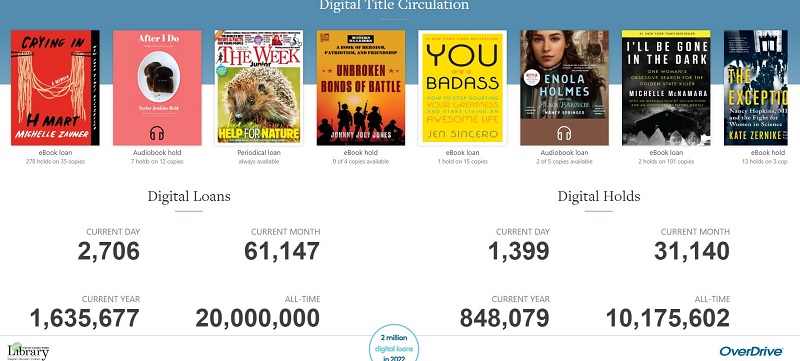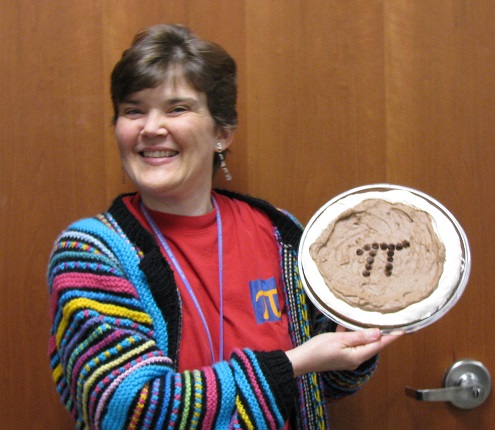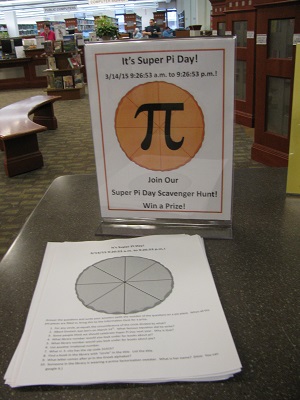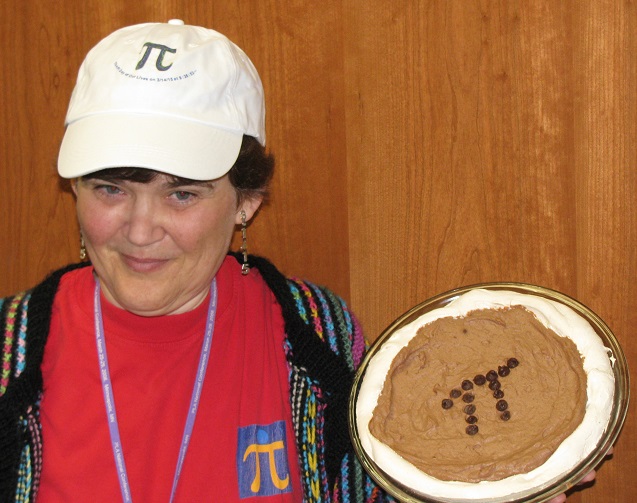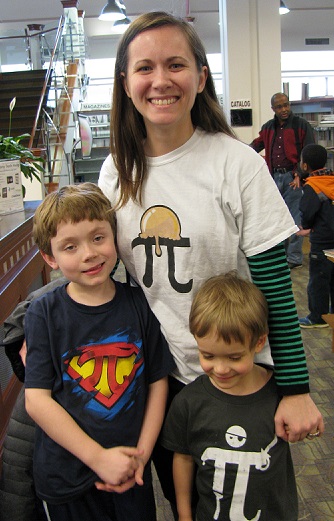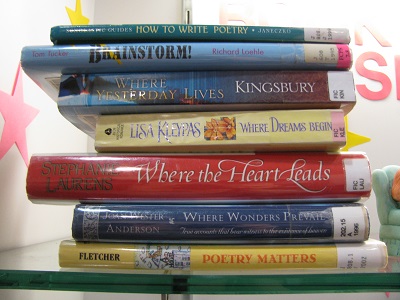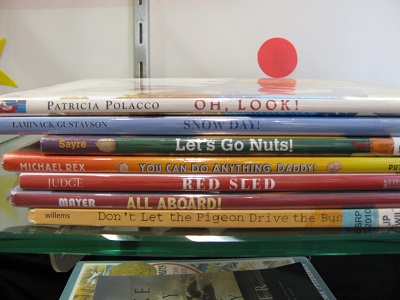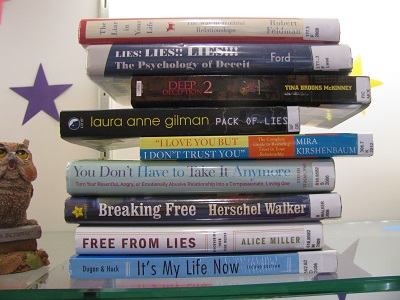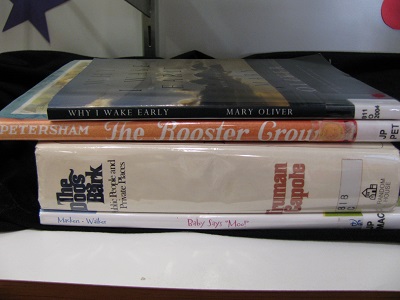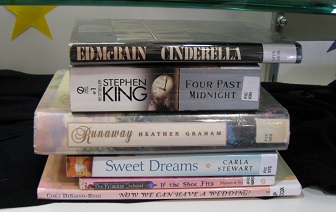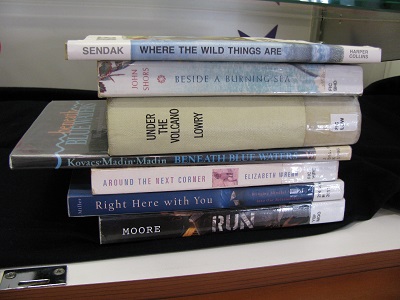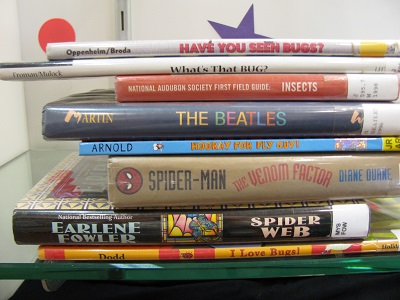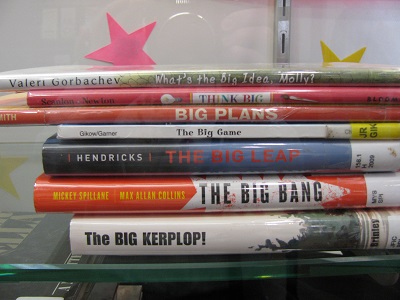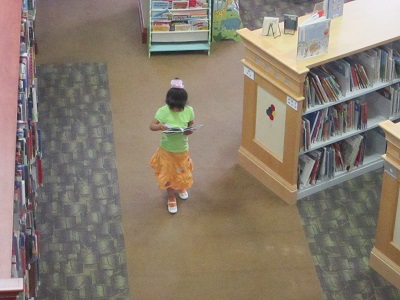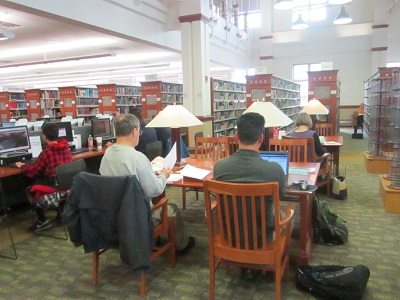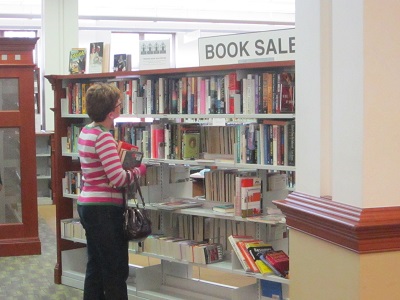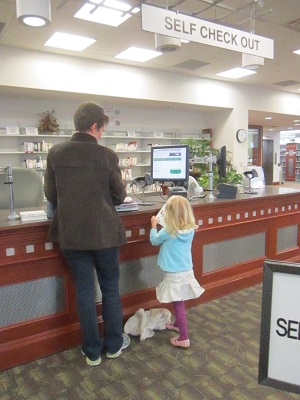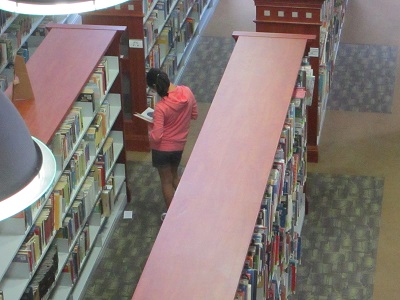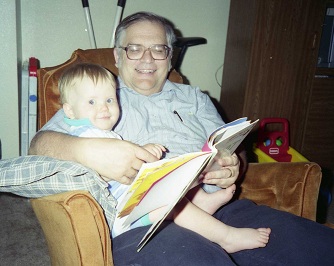This last Saturday I got to do an Every Child Ready to Read Workshop (sponsored by the Association for Library Service to Children and the Public Library Association), but I confess I made some changes.

The workshop, as prepared, was “Fun with Science and Math for Parents and Preschoolers.” The workshop I did? Well, I confess I left out the science and added lots of math activities.
Some friends on my Facebook page asked for details, and I thought it might be helpful for other librarians to know the adjustments I made. So I’ll just give the basic outline of the program. Imagine nice slides that came with the Every Child Ready to Read workshop.
As they came in, I gave every parent-child group a piece of paper and a box of crayons. I told them to write their child’s name in large letters so everyone could see. Some parents did this and some had their children do it. I let them keep the crayons and paper just in case the kids got restless during the talking-to-the-parents part.
We began with the welcome song, where we sing to each child. For example, if I were the child, it goes like this: “Sondy’s here today. Sondy’s here today. Everybody clap their hands. Sondy’s here today.” And we go all around the room. (I use this particular welcome song in all my programs because kids respond so well to their name. In this one, the addition of a writing activity with their parents and holding up the sign is perfect.)
What follows is a bit of an intro about Every Child Ready to Read. To warm up the audience, I mix it up by reading a book, and this time I chose Let’s Count Goats, with words by Mem Fox, and goats by Jan Thomas.
But the meat of ECRR2 is the five easy practices. These five easy practices, done often with your child, will help your child get ready to learn to read when they start school. What’s more, they’re fun. What’s more, they are also practices that will help your child learn math concepts. The beauty of them is that they use teachable moments and can be tailored to fit your child’s level.
The five easy practices are Talking, Singing, Reading, Writing, and Playing.
I have a lot of material on Talking about math as you go through your day.
Here are some examples of some questions you can talk about during the day:
How many toys are on the floor? (A great way to suggest cleaning up: see who can guess how many toys are on the floor.)
How many cars are going by? When riding in the car you can extend this by counting cars you pass and subtracting cars that pass you.
Look! Can you find a “3”? (Play “I spy” with numbers.)
How many spoons do we need? (Setting the table is a math activity.)
Can you find a matching sock? (So is sorting laundry.)
I spy something shaped like a circle! (Identifying shapes is a math activity as well as a predecessor to learning the alphabet.)
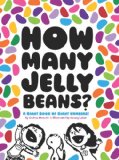 How many jelly beans do you want?
How many jelly beans do you want?
After that question, I talk about how when my boys were little, before they had much of a numerical concept, I’d ask them how many candies they wanted. They learn quickly that way! This is a great lead in to reading the book How Many Jelly Beans? By Andrea Menotti and Yancey Labat.
Also under Talking about math, I mention that counting, measuring, sorting, and comparing are all math activities. I pass out a handful of foam shapes to each family and tell them to decide how to sort them. They usually choose by either color or shape. They help the child sort them. Then they should count how many shapes in each group and write down the numbers. The families did great with this.

On the third slide for Talking, I have a link to www.bedtimemath.org, and this time I was able to bring their new book for checkout! We read an example problem from the website. I talked about how I did this with my own younger son. The magic words that my son learned could extend bedtime forever were “Just one more math problem, Mommy, please!” I could not resist that plea!
And bedtime, which is indeed a lovely time for reading to your child, is also a cozy time for talking with your child. The problems on bedtimemath.org and in their book are nice problems you can talk about a little bit and work out an answer together. They come at three different levels, so you don’t have to stop when your child is small.
The next of the five easy practices is Singing.
Singing slows down language, so it helps kids learn the sounds in words. It also helps them learn numbers by putting them to music. At this point, we sing “Ten Little Beasties” (same tune as Ten Little Indians), first clapping with each number, and then trying to hold up the number of fingers as we sing. Then we do “Five Little Monkeys Jumping on the Bed” with motions.
The centerpiece of the five easy practices, the most obvious one, is Reading.
 Of course reading to your child will help them get ready to read! But did you know it will also help them get ready for math? I bring a cart full of books with mathematical concepts to the program. And at this point I read one of them. I like to use Quack and Count, by Keith Baker, because it also introduces the concept of addition, and it’s a fun story. The group this week spontaneously added a “Quack, Quack!” at the end of every page.
Of course reading to your child will help them get ready to read! But did you know it will also help them get ready for math? I bring a cart full of books with mathematical concepts to the program. And at this point I read one of them. I like to use Quack and Count, by Keith Baker, because it also introduces the concept of addition, and it’s a fun story. The group this week spontaneously added a “Quack, Quack!” at the end of every page.
The fourth of the five easy practices is writing.
Here I talk about all the reasons to write numbers in life. Any time you write a list, you’re modeling this. Even if you don’t use numbers, if you write your grocery list in groups, that’s still a mathematical skill of sorting.
For a little activity here, I ask the parents to help the children count how many letters are in their name and write down the number on the paper next to their name.
The fifth of the five easy practices is playing.
For reading, dramatic play is so good. For math, I use this opportunity to put in a plug for board games. Candyland’s a great start, and you can’t beat Monopoly Jr for beginning addition and counting.
But playing is also at a much less formal level. Any measuring, counting, sorting, and comparing can be playing. At this point, we have all the families get in line in order of the number of letters in the children’s names from the front of the room to the back. This time, we went from BJ to Alexandra.
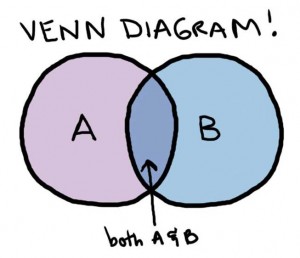
For another playing activity, we did a Venn diagram. I brought in a bucket of cars and trucks. I put two yarn circles on the floor. One circle was for red things. One circle was for cars. I put them on the ground so they overlapped. We figured out together where the different objects went. (“Is it red? Is it a car?”) I definitely should have used red yarn for the “red things” circle. But the kids had fun with it, anyway.
On another “Playing” slide, when it works, I show this clip from the Fred Rogers center.
This time, for some reason the link wouldn’t work. But it shows a family making beaded bracelets and necklaces using repeating patterns. Then we get the same idea reading the book Pattern Fish, by Trudy Harris.
Finally, we summarize the five easy practices. For a closing take-home activity, I pass out foam rectangles and half-sheets of paper. They can staple the paper inside the foam to make a counting book. They are welcome to decorate the outside with patterns using the foam sticky shapes. (We probably don’t have to have a craft at the end, since the program does go long, but I had the materials, and it’s a nice take-home reminder….)
So there you have it! Some simple ways to incorporate Talking, Singing, Reading, Writing, and Playing… about Math!
I’ve done this program twice, and we’ve had a lot of fun both times. The parents get lots of ideas, and we all have fun together. It does run long, a whole hour, but the kids stay engaged, so I must be doing something right.
Any ideas and tips you have from using the Every Child Ready to Read Workshops? Or just ideas for Talking, Singing, Reading, Writing, and Playing about Math with Preschoolers?
Disclaimer: I am a professional librarian, but I maintain my website and blogs on my own time. The views expressed are solely my own, and in no way represent the official views of my employer or of any committee or group of which I am part.

